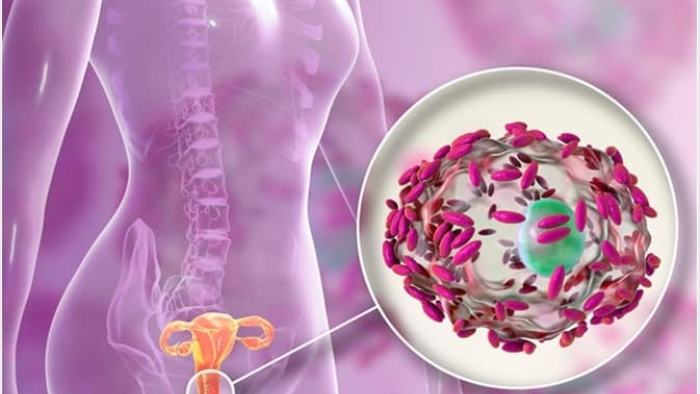
Vaginal yeast infections
Vaginal yeast infections are one of the most common problems that women face at different stages of their lives. This infection, which is mainly caused by the fungus Candida albicans, can cause symptoms such as itching, burning, and abnormal discharge. Although this disease is usually not dangerous, if left untreated or with repeated infections, it can affect a person's quality of life. Although vaginal yeast infections are usually not a serious problem, they can be accompanied by annoying symptoms and, in some cases, repeated infections. Early identification and treatment, in addition to reducing symptoms, can prevent more serious complications. People who do not have sex may also get vaginal yeast infections. Therefore, it is not considered a sexually transmitted infection. However, you can get vaginal yeast infections through sex. The risk of this vaginal infection increases with the onset of sexual activity. Yeast infections that occur more than four times a year may require a longer course of treatment and a prevention program. If you experience symptoms, it is important to consult a specialist to receive appropriate treatment.
Causes of infection
Vaginal yeast infections are often caused by an abnormal growth of the fungus "Candida". This fungus is naturally present in the body, but under certain conditions, it can grow excessively. The most important risk factors are:
. Taking antibiotics, which destroys beneficial bacteria in the vagina.
. Pregnancy: Hormonal changes that disrupt the microbial balance.
. Uncontrolled diabetes: Increased sugar in vaginal secretions creates a favorable environment for fungus to grow.
. Wearing inappropriate and tight underwear: Moist and warm conditions are ideal for fungi.
. Weak immune system: Due to diseases such as HIV or taking immunosuppressant drugs
. Using birth control pills or hormone therapy, which increase estrogen levels
Symptoms
:Symptoms of a yeast infection range from mild to moderate and can include
. Itching, irritation of the vagina and vaginal opening, which is one of the most common symptoms
. Vaginal discharge: A thick, white discharge often described as "cottage cheese-like."
. Burning during urination or sex: Due to inflammation of the vaginal tissue
. Redness and swelling: Especially in the outer area of the vagina, which may be harder to see on darker skin than on lighter skin.
:Sometimes you may have a complicated yeast infection if
. Severe symptoms such as severe redness, swelling, and itching that lead to sores in the vagina.
. If you get four or more yeast infections in a year.
. Your infection is caused by a less common type of fungus
. During pregnancy
. Diabetes that is not well controlled
. Your immune system is weakened by certain medications or conditions, such as HIV infection.
Diagnosis
Yeast infections are usually diagnosed using a clinical history and physical examination. However, in more complex cases, the following procedures are recommended:
. Microscopic examination: Examination of vaginal discharge to identify the fungus
. Fungal culture: To determine the exact type of fungus and its sensitivity to drugs
. Vaginal pH test: Yeast infections usually have a pH of less than 4.5
Preventive measures
Preventing vaginal yeast infections (especially in people who are prone to these infections or who experience repeated infections) can help reduce the risk of developing them and improve quality of life. The following preventive measures can be taken to reduce the likelihood of developing this infection:
" Hygiene"
. Gentle washing: Use unscented, mild soaps to wash the genital area. Excessive washing or using vaginal douches can disrupt the natural microbial balance.
. Keeping the genital area dry: After washing, dry the genital area well, as a moist environment facilitates the growth of fungi.
. Changing underwear: Wearing cotton underwear and changing it daily helps reduce moisture.
" Lifestyle modification"
. Avoiding tight clothing: Wearing very tight clothing, especially plastic pants, can prevent proper ventilation and increase humidity.
. Stress management: Stress can weaken the immune system and increase the risk of infection.
. Eat a healthy diet: A diet rich in nutrients and low in sugar can help reduce the likelihood of yeast growth. Eating foods containing probiotics (such as probiotic yogurt) can help maintain microbial balance.
" Avoid irritants"
. Avoid using scented products: Do not use scented pads, tampons, soaps, and sprays in the genital area. These products may disrupt the natural pH balance of the vagina.
. Be careful with antibiotics: Antibiotics can kill the good bacteria in the vagina. If you need to take antibiotics, talk to your doctor about preventing yeast infections
. Avoid wearing wet clothes for long periods of time: Change out of wet swimsuits or gym clothes immediately after activity.
" Manage underlying conditions"
. Control diabetes: Keeping blood sugar levels within normal limits can help prevent yeast growth.
. Boost your immune system: If you have a condition that weakens your immune system, talk to your doctor about boosting your immune system.
" Take probiotics"
. Taking supplements containing lactobacillus or probiotic foods such as yogurt can help maintain a microbial balance in the vagina
" Pay attention to when and how you use sanitary products"
. Regularly change tampons and sanitary pads: During menstruation, change tampons and pads regularly to prevent the creation of
a suitable environment for the growth of fungus.
" Be careful about sex"
. Using a condom may reduce the risk of transmitting yeast or bacterial infections.
. If you have symptoms of an infection, avoid having sex until you are completely cured to avoid irritating your vagina or passing the infection to your partner
?When should you see a doctor
. This is your first time having symptoms of a yeast infection
. You are not sure if you have a yeast infection
. Your symptoms have not gone away after using a vaginal antifungal cream or suppository. (Do not use it on your own unless your doctor has prescribed it)
Resources